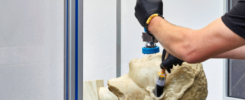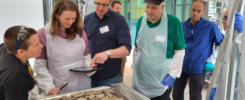KulturGutRetter is developing technical characteristics for procedures, teams and equipment, enabling the Unit to cover the tasks of damage assessment, evacuation of movable heritage, and emergency intervention on movable and immovable heritage.
By Constance Domenech de Cellès, Research Associate – KulturGutRetter, German Archaeological Institute, and Nils Jakubeit, Project Manager, Federal Agency for Technical Relief.
The purpose of the Cultural Heritage Response Unit (CHRU) developed by KulturGutRetter is to be deployable worldwide to provide emergency assistance to cultural heritage, in the first days after a disaster caused by natural hazards or man-made. Interoperability between civil protection and cultural heritage experts is key in meeting that goal. This is why KulturGutRetter is developing technical characteristics for procedures, teams and equipment, enabling the Unit to cover the tasks of damage assessment, evacuation of movable heritage, and emergency intervention on movable and immovable heritage. As a self-sufficient unit intended for interventions abroad, the CHRU focuses on upholding European and international standards and on fostering interoperability with other emergency actors on the ground – whether they belong to the civil protection or the cultural heritage sector.
Team structure
On the ground
The team structure of the CHRU is based on the one designed by THW for its international emergency relief deployments, in which expertise dedicated to the rescue and salvage of cultural heritage is injected. This allows professionals coming from both fields to work together under the same united line of command.
Tasks and requirements are being defined for each function within the team. The on-site Team Leader (generally coming from THW) reports to the joint background staff coming together at the operation centre at the THW HQs facility. He/she is assisted by a deputy Team Leader and supervises:
- a Support Unit (logistics cell, THW Information & Communications Technology, Paramedic, Camp/Maintenance)
- several experts (Media Officer, Liaison Officer(s), Safety & Security, Structural Engineer(s))
- a Chief of Operations, who is in charge of the specialised cultural heritage units: Unit 1 – Movable heritage, Unit 2 – Immovable heritage and the IT-unit, split between the Support, Movable and Immovable Heritage Units.
Depending on the nature of the response mission, it will be possible to add further units, such as a Rapid Deployment Water Supply (SEEWA) module, or a unit of local partners and volunteers.
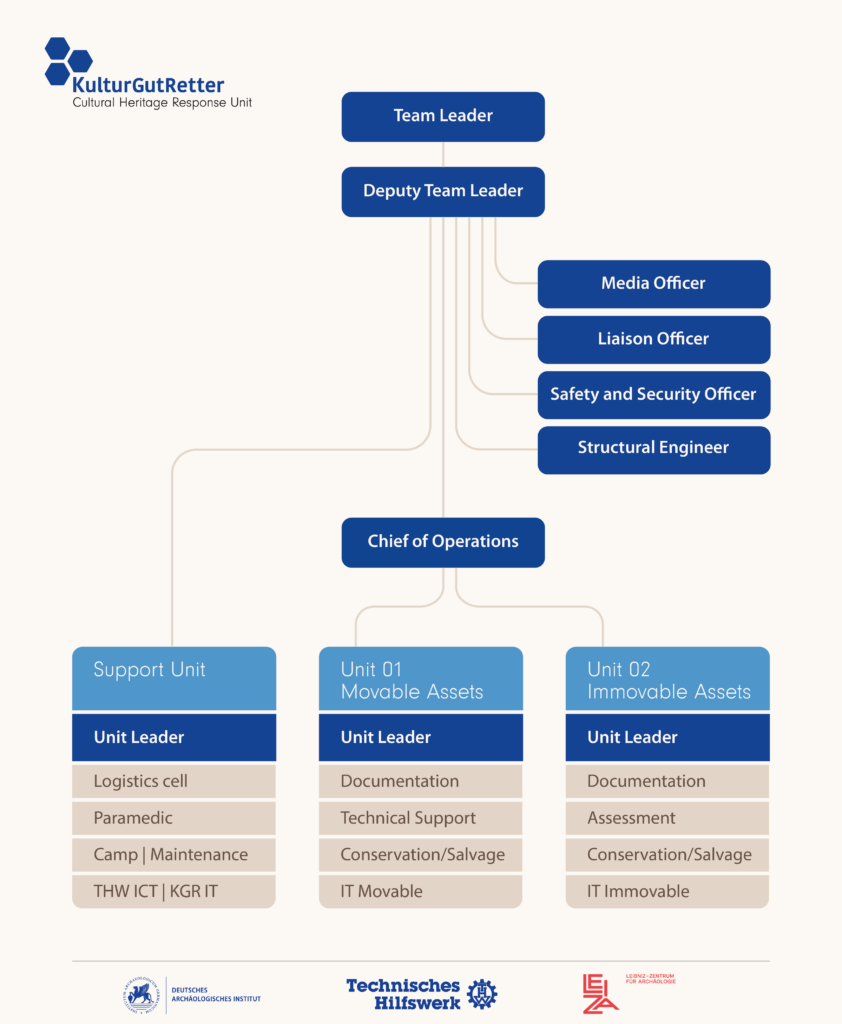
Network of experts
In order to have the right expertise on-hand when an emergency strikes, KulturGutRetter is developing a network of professionals from different specialities (restorers, engineers, curators, archaeologists, technical advisors….). Profiles are being defined, setting out specific requirements for each field of expertise. Administrative, legal, insurance and medical issues for international interventions will as much as possible be processed upstream. The goal is to have a vetted database of ready-to-deploy experts, to complement the CHRU core-team according to the emergency’s needs.
Training
A common training program is currently being designed for cultural and civil protection experts who will be part of the CHRU network, in order to ensure a minimal shared knowledge and mutual understanding. THW staff that are deployed within the CHRU have followed the THW basic training for international missions, which focuses on procedures and principles, partners and actors, safety and security, coordination procedures. Regular trainings and exercises will be organised to keep the team operational and up-to-date with standards.
Equipment and logistics
General camp infrastructure
As any international emergency relief module, the CHRU is designed to be a self-sufficient, autonomous unit. The core equipment and logistics deployed for the CHRU are directly linked to the ones used by THW for its civil protection mission. The components of the Base of Operations can be scaled according to the size of the mission. One camp unit includes: kitchen tent, sleeping tents, office/residence tent, mobile showers and toilettes, generator, lightening and tools. Telecommunication and IT-equipment, as well as medical equipment are also included.
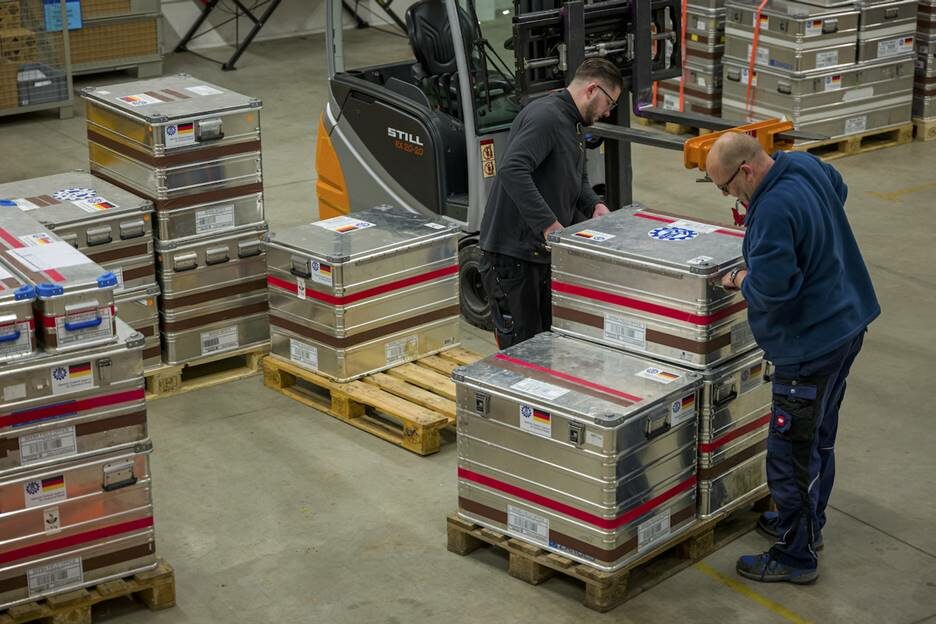
Specific equipment for cultural heritage
In order to answer the specific focus of the CHRU, additional equipment has been designed, that meets the needs of emergency interventions for cultural heritage while being compatible with the civil protection logistic requirements.
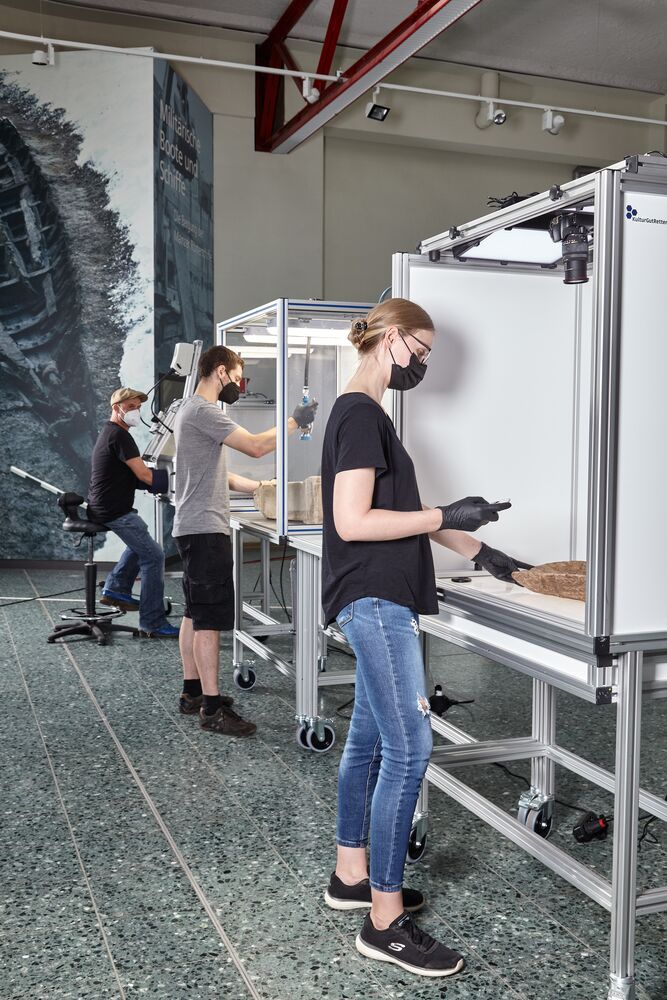
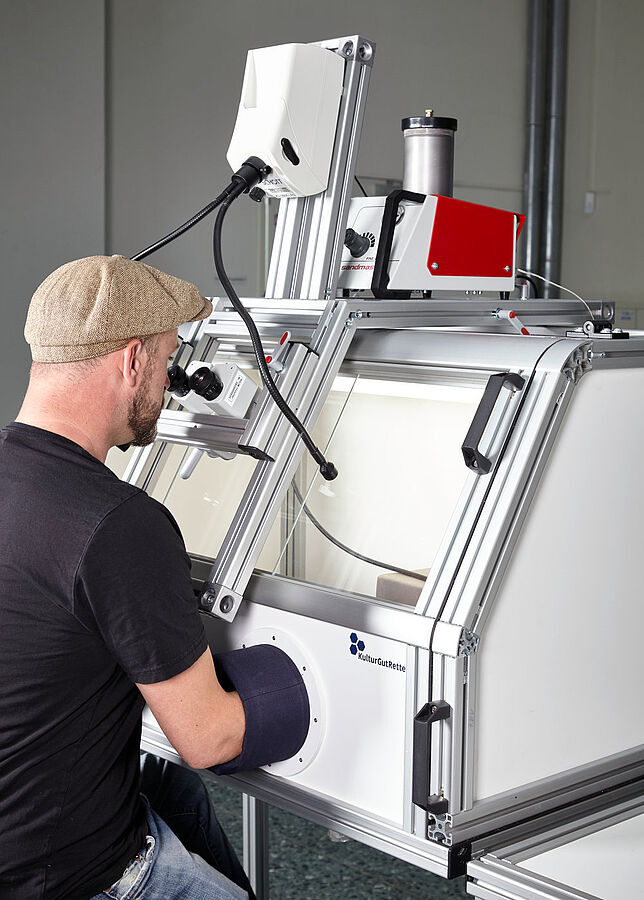
The modular table system can be scaled and combined depending on the situation. Various modules, such as the dry cleaning module (right), can be used depending on the nature of the cultural property. Photos: LEIZA, René Müller.
LEIZA has developed a light, modular table system to provide first care to movable heritage, into which different stations can be integrated as needed: dry-cleaning, wet-cleaning, photo-documentation, packing of small objects… A “unit” of this mobile conservation laboratory corresponds to a specific team size, and can be scaled as required. The elements can be stored in standard-size transport boxes, suitable for airplane transport, and easily assembled/disassembled using basic tools.
IT backbone and data structure
A robust, dedicated digital infrastructure is being developed, for all the phases of a CHRU response mission: preparation, in the field, post-operation processing.
The pre-existing information on the affected site (photos, floorplans, inventories, GIS-data…) is gathered and made available to the on-site experts through mobile devices. During the response operation, they will be able to collect their own data and document the actions undertaken, by using the same mobile devices and predefined digital forms. Thanks to the use of QR-codes, it will be possible to track the position and status of movable heritage. At the end of the mission, the structured data about the rescued cultural heritage will be handed over to the country and institution concerned and can be incorporated into existing data structures to contribute to its long-term care and maintenance.
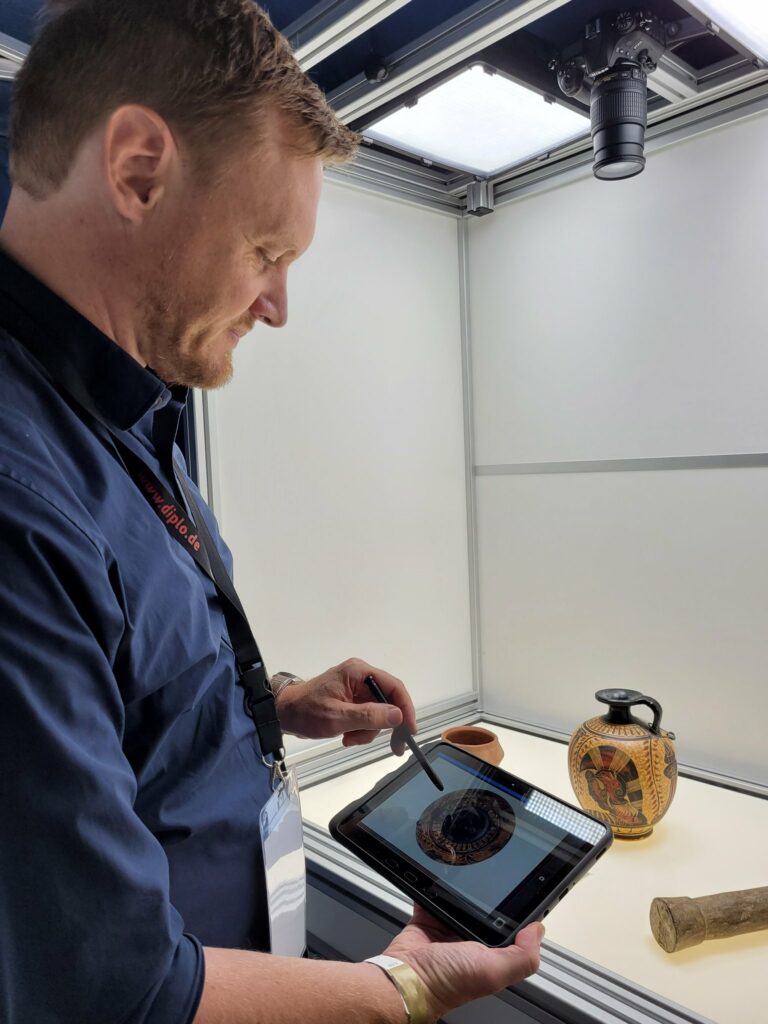
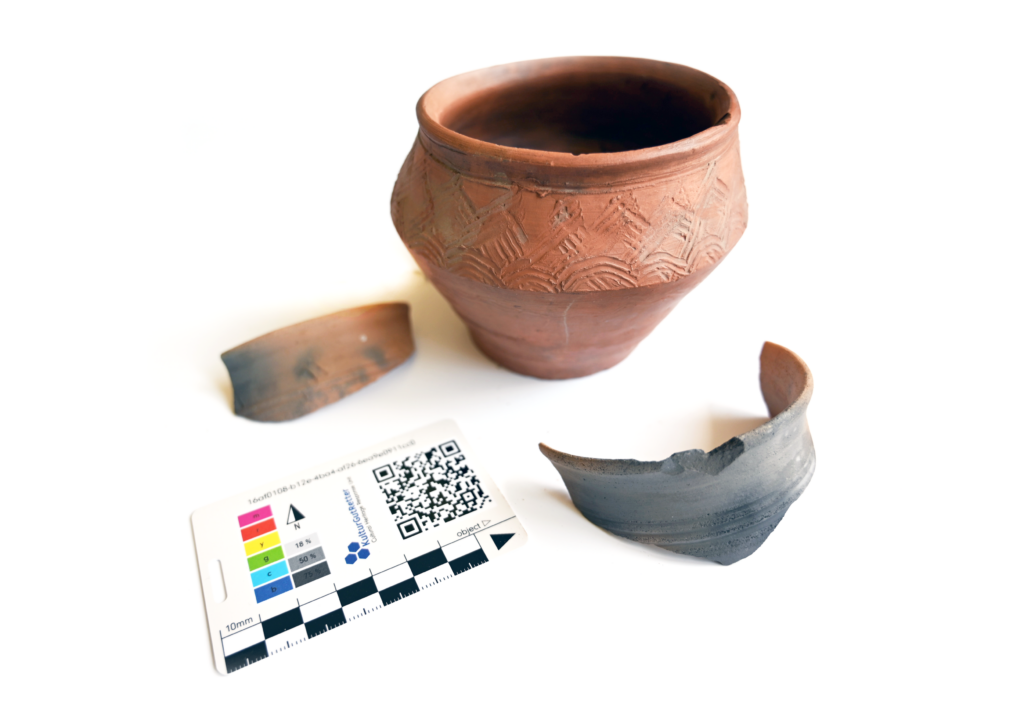
The CHRU uses two apps, iDAI.field – developed in-house by the DAI for archaeological projects and further adapted for KulturGutRetter’s needs – and Qfield, which are both open source software. They allow to collect data in the field in a quick and efficient manner, for both movable and immovable heritage. The apps allow easy synchronisation, exchange of data with other apps, and processing of data at a later stage. The software is designed to be easily accessible to local personnel after a short training.
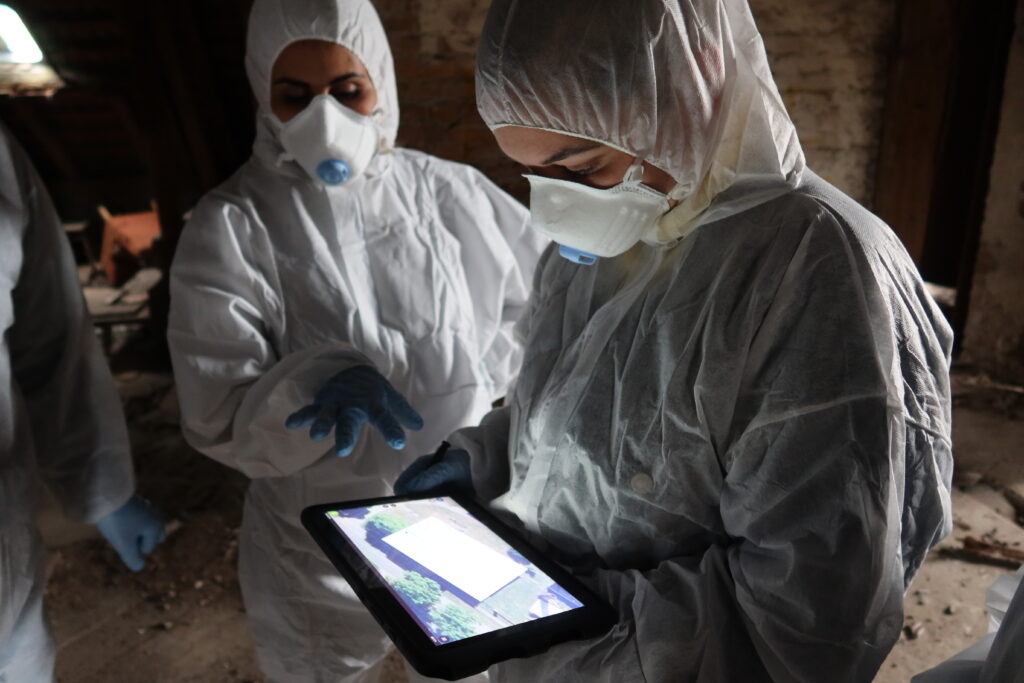
Standard Operation Procedures
Activation mechanism and mobilisation of resources
The CHRU will be activated after an official request for international assistance from the country hit by a disaster has been received by Germany, either bilaterally or through the European Union. Upon agreement of deploying the CHRU, an alert will be sent to THW which will set forth with the activation process: contact of the core team, message to the required experts from the network to confirm availability, mobilisation of resources and equipment.
Coordination and communication
The central coordination for a CHRU mission will take place in the operation centre of the THW Headquarters in Bonn. The staff working in the operations centre will come jointly from THW, the DAI and LEIZA. It will be responsible for the overall mission and serve as a support for the field team (from flight bookings to activating local networks or gathering expert knowledge on special cultural heritage issues).
Operations
Remote-sensing and emergency documentation: The IT-team will gather information on the general situation and on the affected cultural heritage through several sources (e.g. Copernicus, social media). All available pre-existing information on the cultural heritage (e.g. architectural plans, photos and inventories) will also be collected and made ready to use. If necessary, a first assessment team can be deployed on the ground to better assess the needs for the full mission.
Logistics for deployment
THW has a Logistics Centre for missions abroad (ZAL) located near the airport Frankfurt/Main, where equipment for self-sufficiency and also the CRHU specialised equipment will be stored.
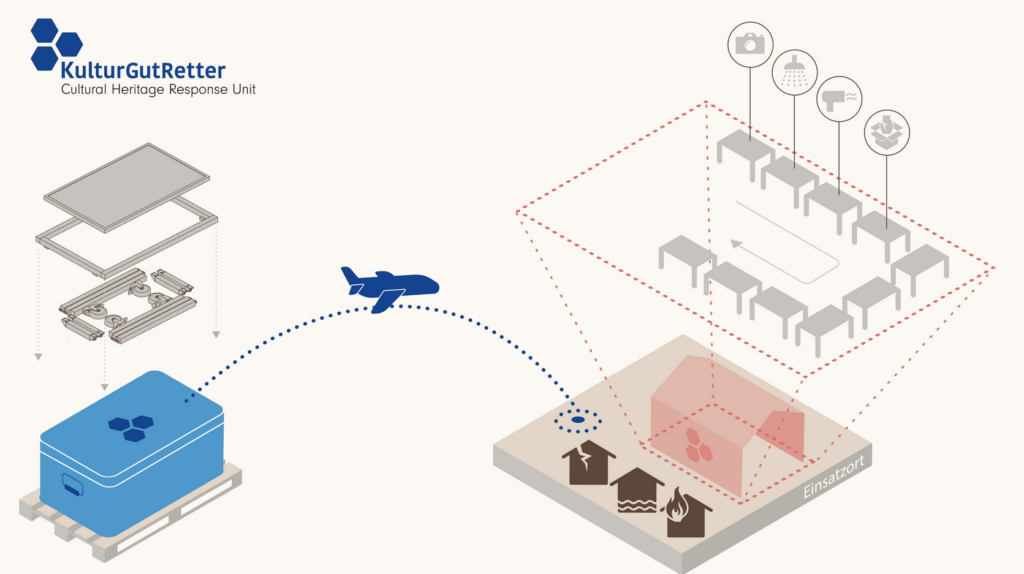
Minimal Standard Procedures (MSP)
MSPs are being developed to ensure that uniform and coordinated standards are followed by all team members, even when working in different locations. They describe three main phases for the handling of movable and immovable heritage: documentation of the condition (photographs, drawings, rapid 3D documentation), assessment and prioritization of damage, implementation of first emergency measure (sorting, cleaning, emergency conservation and stabilisation, storage). These MSPs can be adapted to the situation and to the nature of the endangered cultural heritage. They guarantee the transparency of the procedures and the constant quality in the execution of measures.
Hand-over and end of mission
Once the cultural heritage is secured and stabilised thanks to first aid measures, it is handed-over to the competent authorities along with a transparent documentation of the steps taken. Recommendations for further actions will also be given and opportunities for capacity-building can be envisaged. After the end of the mission, a debriefing is organised to identify lessons learned and constantly improve the CHRU capacity.
Next steps towards European integration
2023 is a pivotal year for KulturGutRetter. Training and exercises are planned with the goal of developing the first operational capacities by end of the year. The involvement of two KulturGutRetter partners – the DAI and THW – in the European project PROCULTHER-NET is an opportunity to further integrate the unit with European standards and to guarantee its interoperability with future developments of the European Union Civil Protection mechanism (UCPM).
Source: Technical Bulletin | PROCULTHER-NET, Issue #1, March 2023
